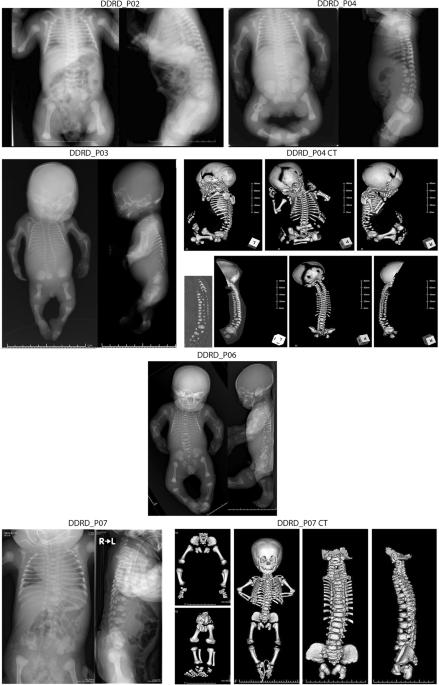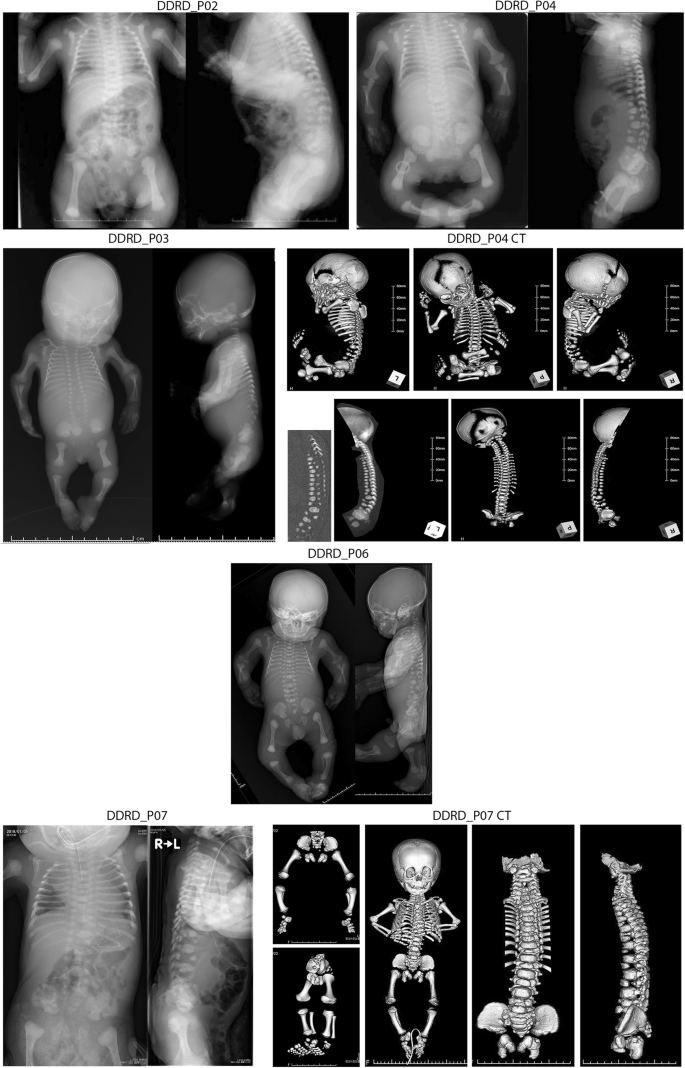Dyssegmental dysplasia Rolland–Desbuquois type is caused by pathogenic variants in HSPG2 - a founder haplotype shared in five patients
IF 2.6
3区 生物学
Q2 GENETICS & HEREDITY
引用次数: 0
Abstract
Dyssegmental dysplasia (DD) is a severe skeletal dysplasia comprised of two subtypes: lethal Silverman–Handmaker type (DDSH) and nonlethal Rolland–Desbuquois type (DDRD). DDSH is caused by biallelic pathogenic variants in HSPG2 encoding perlecan, whereas the genetic cause of DDRD remains undetermined. Schwartz–Jampel syndrome (SJS) is also caused by biallelic pathogenic variants in HSPG2 and is an allelic disorder of DDSH. In SJS and DDSH, 44 and 8 pathogenic variants have been reported in HSPG2, respectively. Here, we report that five patients with DDRD carried four pathogenic variants in HSPG2: c.9970 G > A (p.G3324R), c.559 C > T (p.R187X), c7006 + 1 G > A, and c.11562 + 2 T > G. Two patients were homozygous for p.G3324R, and three patients were heterozygous for p.G3324R. Haplotype analysis revealed a founder haplotype spanning 85,973 bp shared in the five patients. SJS, DDRD, and DDSH are allelic disorders with pathogenic variants in HSPG2.


Rolland-Desbuquois型发育不良是由HSPG2的致病变体引起的,这是五名患者共有的一个创始单倍型。
骨骼发育不良(DD)是一种严重的骨骼发育不良,包括两个亚型:致死型 Silverman-Handmaker 型(DDSH)和非致死型 Rolland-Desbuquois 型(DDRD)。DDSH是由编码perlecan的HSPG2的双偶性致病变体引起的,而DDRD的遗传原因仍未确定。Schwartz-Jampel 综合征(SJS)也是由 HSPG2 的双等位致病变体引起的,是 DDSH 的等位基因紊乱。在 SJS 和 DDSH 中,HSPG2 中分别有 44 个和 8 个致病变体。在此,我们报告了五名 DDRD 患者携带 HSPG2 中的四个致病变体:c.9970 G > A (p.G3324R)、c.559 C > T (p.R187X)、c7006 + 1 G > A 和 c.11562 + 2 T > G。单倍型分析显示,五名患者共有一个跨度为 85,973 bp 的创始单倍型。SJS、DDRD 和 DDSH 是具有 HSPG2 致病变体的等位基因疾病。
本文章由计算机程序翻译,如有差异,请以英文原文为准。
求助全文
约1分钟内获得全文
求助全文
来源期刊

Journal of Human Genetics
生物-遗传学
CiteScore
7.20
自引率
0.00%
发文量
101
审稿时长
4-8 weeks
期刊介绍:
The Journal of Human Genetics is an international journal publishing articles on human genetics, including medical genetics and human genome analysis. It covers all aspects of human genetics, including molecular genetics, clinical genetics, behavioral genetics, immunogenetics, pharmacogenomics, population genetics, functional genomics, epigenetics, genetic counseling and gene therapy.
Articles on the following areas are especially welcome: genetic factors of monogenic and complex disorders, genome-wide association studies, genetic epidemiology, cancer genetics, personal genomics, genotype-phenotype relationships and genome diversity.
 求助内容:
求助内容: 应助结果提醒方式:
应助结果提醒方式:


